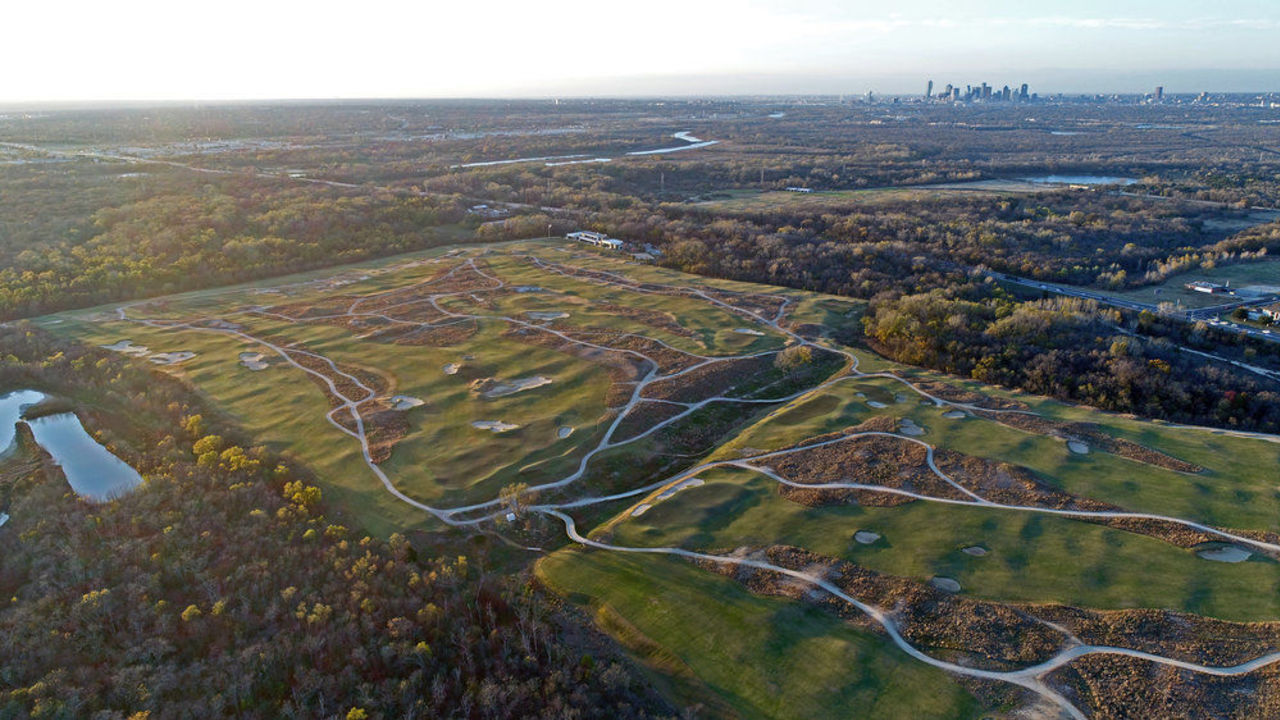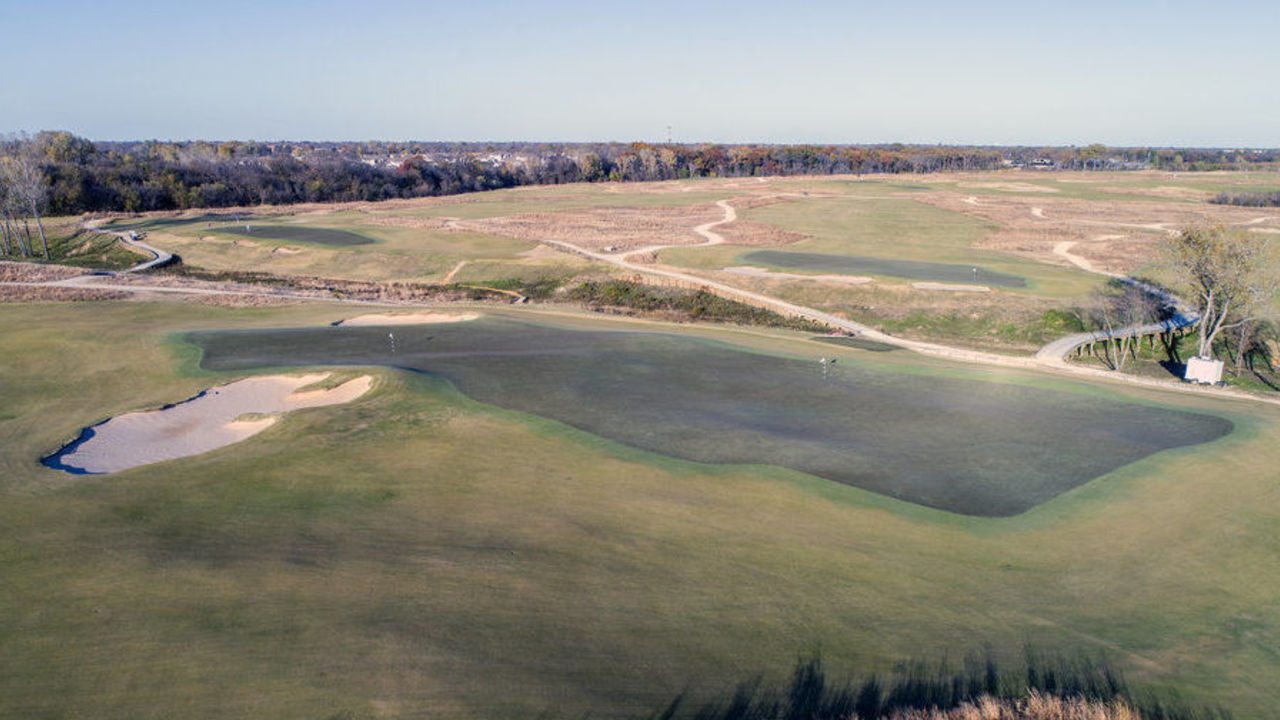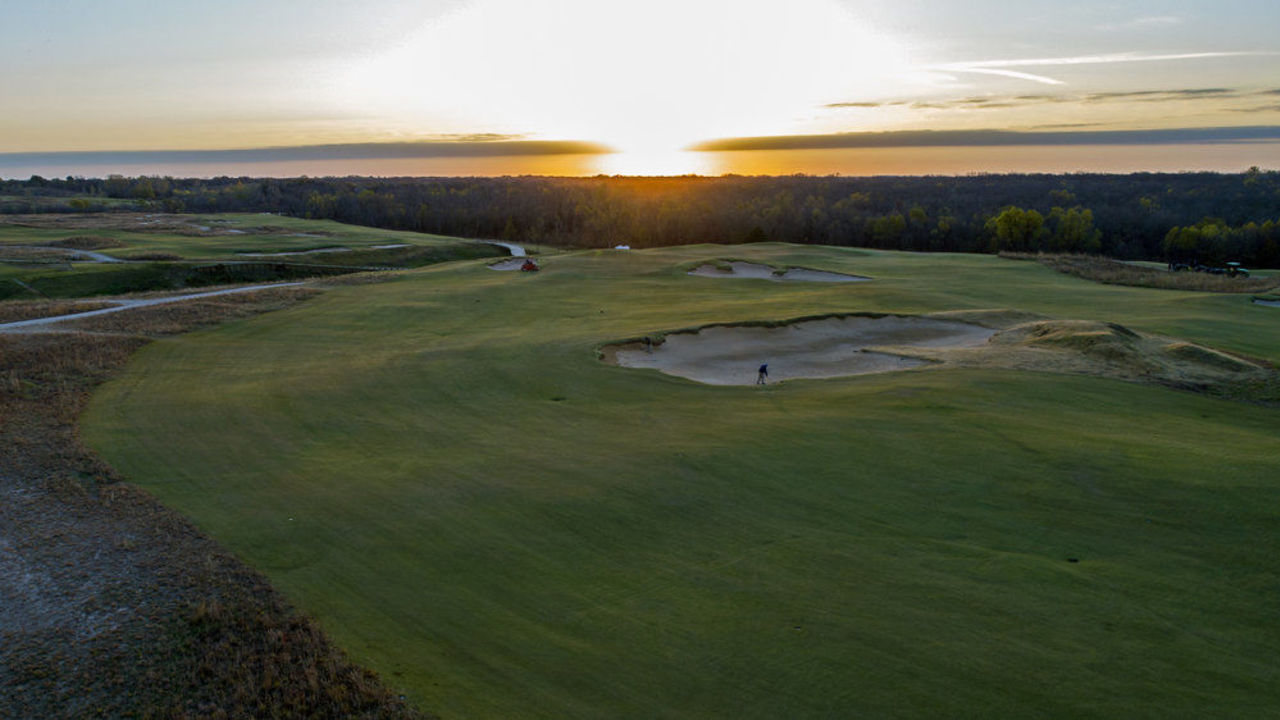AT&T Byron Nelson: 4 things to know about host course Trinity Forest
This article was written ahead of the 2018 AT&T Byron Nelson for Trinity Forest's debut on the PGA Tour.
If the field for the AT&T Byron Nelson doesn't get you excited, the tournament's venue certainly should. Trinity Forest Golf Club in Dallas is the most unique course on the PGA Tour schedule in terms of design, playability, and strategy.
Modeled in 2016 by world-renowned golf course architects Bill Coore and Ben Crenshaw - the great minds behind some of the world's most famous and visually appealing courses, such as Cabot Cliffs, the Red course at Streamsong, and Sand Valley - Trinity Forest has a minimalist design that requires a high level of strategy and execution.
Here are four must-know facts about the 7,380-yard par-71 layout:
One man's trash is another man's treasure

Located 10 miles south of downtown Dallas, Trinity Forest was built on an old landfill site, which is why it's propped up above the surrounding trees, exposing it to strong Texas winds. The landfill site limited Coore and Crenshaw's ability to dig, leading to odd and tricky subtleties throughout the property, and most notably around the greens.
The players love it, for now
Trinity Forest offers a great change of pace for PGA Tour pros. Jordan Spieth is a member at this week's venue and is excited about the challenge ahead.
Zac Blair, one of the most hardcore golf course architecture junkies on the Tour, expressed his excitement on Twitter. Sergio Garcia noted his enthusiasm as well, hoping the course plays firm and fast, how it's intended to be played.
However, with the relentless Texas heat set to bake Trinity Forest over the next four days, the firm and fast conditions may be too much to handle for the PGA Tour pros, who aren't used to these playing conditions. Depending on how the week goes, there could be a lot of mixed reactions come Sunday.
2 flags, 1 green

Taking a page from the Old Course at St. Andrews, Coore and Crenshaw utilized the famous double green design for holes 3 and 11 at Trinity Forest. At approximately 35,000 square feet, this is the largest green in North America.
Where are the trees?

You'd think that with a name like Trinity Forest there would be some trees on the property, but not a single one comes into play on the entire course. There are also zero water hazards on the property, as it relies on wind, strategic bunker placement, and optimal angles as its main defense.
Here's a great video on how Coore and Crenshaw intend Trinity Forest to be played:
Regardless of this week's results, the amount of buzz Trinity Forest is creating around an event with a less-than-stellar field is remarkable. If nothing else, it's a nice appetizer to the Open Championship in July.
(Photos courtesy: The Fried Egg)
HEADLINES
- Potgieter wins Rocket Classic in playoff for 1st PGA TOUR victory
- Reed finally wins on LIV Golf with birdie in 4-man playoff
- Harrington prevails in head-to-head showdown with Cink to win U.S. Senior Open
- Potgieter, TOUR's youngest player and biggest hitter, leads Rocket Classic by 2
- Knapp breaks course record at Rocket Classic, sits tied for 8th